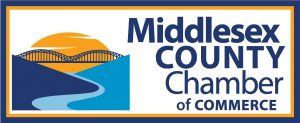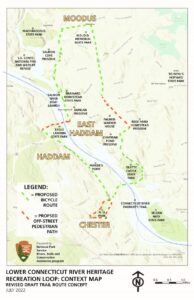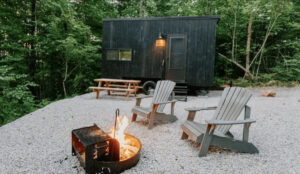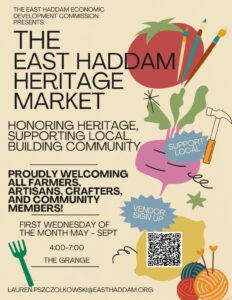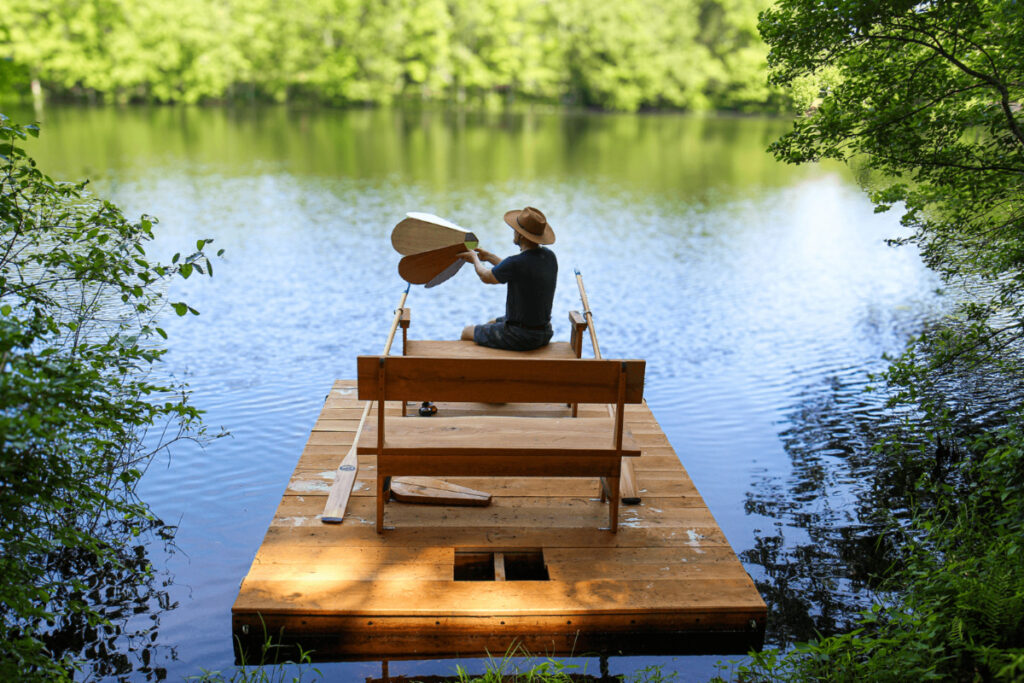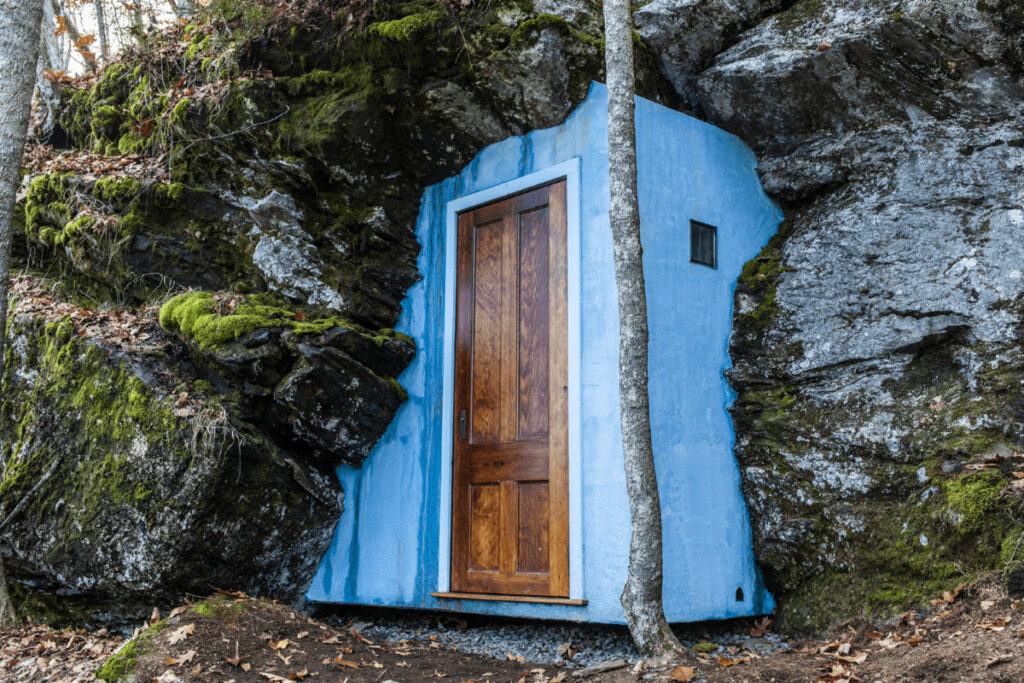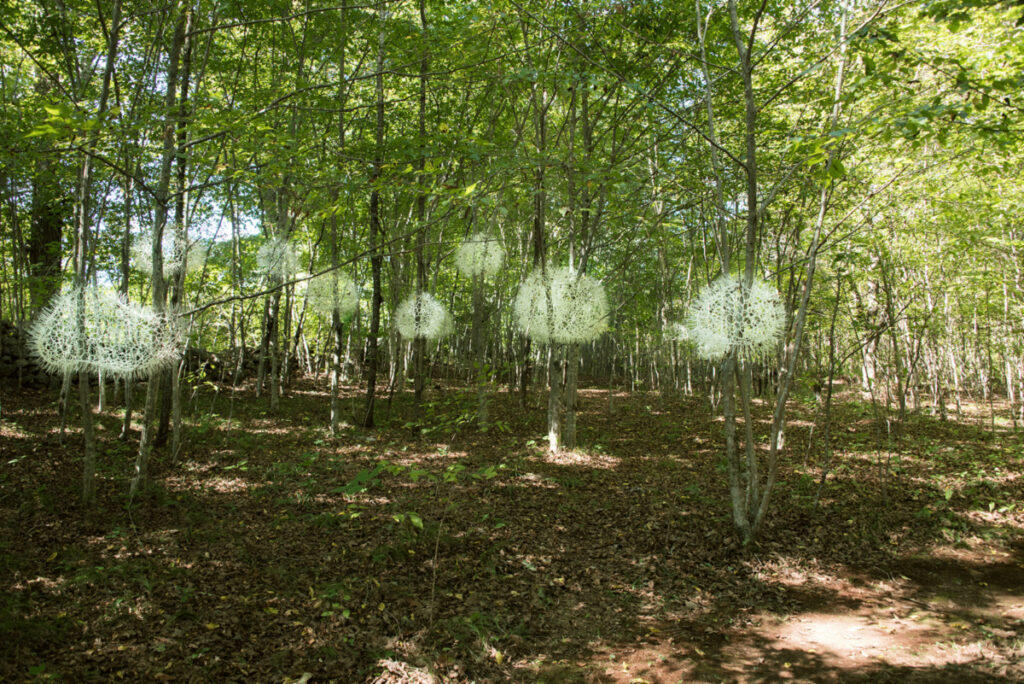Economic Development Newsletter
June 2025
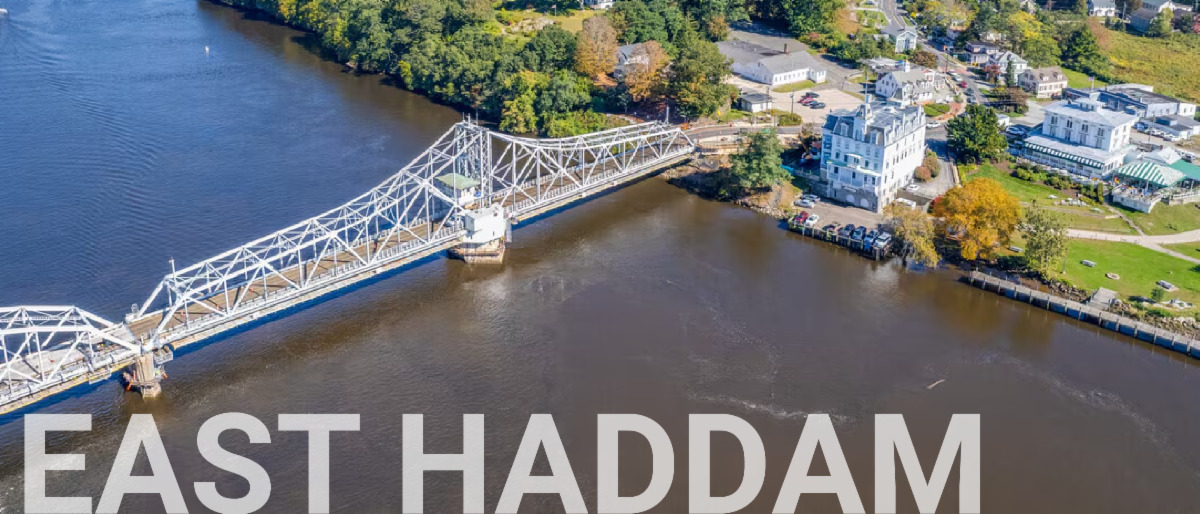
EAST HADDAM, CONNECTICUT
East Haddam, Middlesex County’s largest town by land area, has a rich history dating back to its settlement in the late 17th century. It was originally part of Haddam before becoming a separate town in 1734. The area's early economy centered around the Connecticut River, with industries such as timber farming, shipbuilding, and river commerce. In the winter of 1773, American patriot Nathan Hale briefly taught in a one-room schoolhouse in East Haddam, now a living history museum.
Visitors and residents, including actor William Gillette, whose castle home was completed in 1914, were drawn to the area known for its rural charm and scenic beauty. The development of resort areas around Lake Hayward, Bashan Lake, and Moodus Reservoir started in the early 1900s. Later, Moodus earned the nickname “Catskills of Connecticut” because it became a popular summer resort destination for visitors from New York City seeking an escape from the city.
In 2021, the New York Times listed East Haddam as one of the 52 Places to Love.
TOWN STATS
General
Current Population: 8,934
Median Age: 50
Median Household Income: $105,866
Economy
Top Industries
1. Government
2. Health Care and Social Assistance
3. Arts, Entertainment and Recreation
4. Retail Trade
5. Construction
Housing
Median Home Value: $351,300
Median Rent: $1,238
Housing Units: 4,294
From 2024 Town Profiles courtesy of AdvanceCT and CT Data Collaborative.
Economic Development Highlights
The Lower Connecticut Valley Heritage Trail is a proposed multi-use path connecting East Haddam, Haddam, and Chester. It aims to create a safe and enjoyable route for pedestrians and cyclists, linking various attractions and amenities within these towns. The trail will utilize existing roads with planned improvements and some off-street sections. It will connect residents and visitors to local attractions, historical sites, natural areas, and businesses, enhancing the overall experience of the Lower Connecticut River Valley. The project is a collaborative effort among the CT Department of Energy and Environmental Protection (CTDEEP), Connecticut Landmarks, RiverCOG, The Nature Conservancy, the towns of Chester, East Haddam, and Haddam, The United States Fish and Wildlife Service (USWFS), with technical assistance from the National Park Service Rivers, Trails and Conservation Assistance.
Postcard Cabins in Moodus is an 86-acre retreat built in 2022 on a former 4-H campsite. The cabins range from 140 to 200 square feet, and the Moodus location is one of 29 Postcard Cabins destinations across the U.S. In addition to providing guides for local attractions and activities, guests can bring dogs to enjoy the on-site dog park and explore trails, including the Machimoodus State Park Trail, Bear Hill Loop, and Salmon River Trail Loop.
The East Haddam Heritage Market started in 2025 by the Economic Deveopment Commission, highlights local businesses, artisans, farmers, and organizations of all kinds. Featuring live music, these markets serve as community gatherings that support local talent, honor the town’s heritage, and create a welcoming space for neighbors to connect. Held on the first Wednesday of each month from May to September at the East Haddam Grange, each event has its own unique theme. The upcoming event—Starts & Stripes Market—is scheduled for Wednesday, July 2nd, from 4:00 to 7:00 p.m.
Bob Casner, Chair, East Haddam Economic Development Commission
Bob has chaired the East Haddam Economic Development Commission (EDC) since 2015, bringing a deep understanding of the community, having worked as a building contractor for 40 years before retiring in 2020.
Bob has established strong partnerships with other organizations and commissions, including the EDC’s collaboration with Connecticut Landmarks, a preservation group that owns two historic home museums in East Haddam. Bob and Aaron Marcavitch, Executive Director of Connecticut Landmarks, successfully obtained a grant from the National Park Service to conduct a feasibility study for developing a multi-purpose bike path and walking trail along Route 82 (Town Street). This initial idea grew into an 18-mile, multi-town trail loop involving Chester and Haddam. The loop features key landmarks such as the Hadlyme Ferry and the Haddam-East Haddam Swing Bridge. After the feasibility study was completed, the Town of East Haddam secured a $40,000 grant from the State of Connecticut to hire an engineering firm for trail design, and work is now underway, with a public hearing set for September 2025.
In addition, Bob and the EDC are partnering with the Planning & Zoning Commission (PZC) to create a more welcoming and vibrant Moodus Center. A comprehensive evaluation of the area is being conducted, and recommendations will be made on road layout, pedestrian sidewalks, architectural design, and beautification efforts.
The EDC has updated the East Haddam Visitors Guide, which will be published and distributed to businesses throughout the town in July.
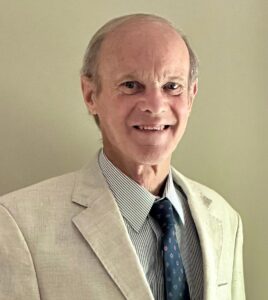
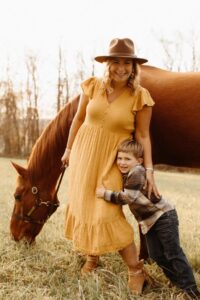
Lauren Pszczolkowski, Economic Development Coordinator
Lauren grew up as the daughter of two local business owners and learned early that businesses are built not only on hard work, sweat, and long hours but also on love, resilience, and community. A lifelong resident of East Haddam, Lauren is a local business owner and the town’s Economic Development Coordinator, creating meaningful events that bring people together and highlight the town's spirit. Halloween in the Village offers hayrides and opportunities for local vendors, and Christmas in the Village brings the community together to welcome Santa as he arrives at Goodspeed Airport.
In 2025, Lauren launched the East Haddam Heritage Market and created the Farm Stand Trail Map to connect residents and visitors with numerous farms and stands offering locally grown produce and cottage foods. Community is a key part of Lauren’s mission. Whether it’s a mom-and-pop shop, a home-based startup, a family farm, or a long-standing local business, she believes every business deserves to be seen, supported, and celebrated.
How Arts & Cultural Organizations Impact the Economic Vitality of a Community
Arts and cultural organizations significantly impact local economic development by attracting visitors, creating jobs, and boosting property values, ultimately contributing to a more vibrant and prosperous community. They contribute through:
Direct Economic Activity
Arts organizations are businesses, employing people locally, purchasing supplies and services, and generating revenue through ticket sales, merchandise, and other activities.
Audience Spending
Arts events and cultural venues attract visitors who spend money at local restaurants, hotels, shops, and other businesses, further boosting the local economy. Americans for the Arts reports that visitors spend an average of $38.46 per person beyond the cost of admission.
Property Values
The presence of arts organizations can increase property values in surrounding areas, benefiting homeowners and generating higher tax revenues. According to the Amador Arts Council, having a cultural organization in a community can raise nearby residential property values by up to 20%.
Tourism
Arts and cultural attractions draw tourists, increasing foot traffic and spending in the area.
Community Revitalization
Arts organizations can transform underutilized spaces into vibrant cultural hubs, attracting new businesses and residents and reversing economic decline.
Public Safety
Communities with arts and culture organizations are often perceived as safer and more appealing, attracting residents and visitors.
Infrastructure Development
Areas with public art and vibrant cultural spaces are more attractive to pedestrians, cyclists, and drivers, leading to safer and more vibrant communities.
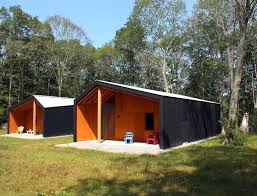
I-PARK: Artists-in-Residence Program
For over 20 years, I-Park has been home to a multidisciplinary artists-in-residence program where artists from around the world spend a month creating new works and sharing their projects during end-of-session Open Studio events. This year, I-Park will host 43 artists; and since 2001, more than 1,200 fully funded residencies have been awarded.
The expansive grounds and site-responsive art are open to the community during Open Trails Days and other community events: presentations, exhibitions, concerts, and family days. These activities enhance and add to the town’s culture while attracting visitors from across the state, the region, and international locations.
The pandemic canceled all residencies in 2020, and in response to the critical need for access to COVID-safe, open-air spaces, I-Park launched the Open Trails Initiative featuring 13 experimental outdoor events that provided public access to 2.5 miles of hiking trails, including guided bird walks, illuminated evening events, and viewing of more than 45 art installations set within the landscape.
The June Open Studios event is happening today, Sunday, June 29th, from 2:00 to 5:00 p.m. Seven artists will showcase their work in visual arts, music composition, landscape design, creative writing, and interdisciplinary practice.
To learn more about I-Park, how you can participate, and how the Foundation supports the East Haddam economy and town culture, visit their website and follow I-Park on social media: Instagram, Facebook, and Vimeo.
